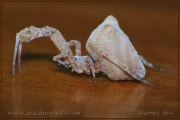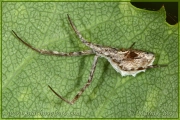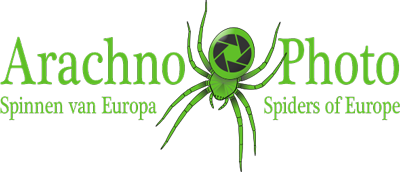In contrast to the other spider families present in Europe, the Uloboridae do not have venom glands and are therefore unique. As a result, it takes considerable more time to spin their prey. In addition, they can be distinguished by locally very dense, white, felt-like hairs, making it seem as if they are dusted with a fine powder. Ten species occur in Europe, of which one species (Uloborus plumipes) in Northern Europe can solely be found in greenhouses and garden centres.
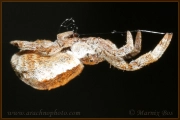
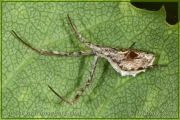
Genus Hyptiotes
These small but solidly built spiders make a extraordinary triangular web, which is held by the spider through the signal thread attached to the tip of the triangle. When a prey gets caught in the web, the spider releases a loop in the signal thread, so the web gets looser and folds around the prey. The males have remarkably large palps, which are almost as large as the carapace. The eye position of the spider is also special. They do not stand in a row and are all placed pretty far back and widely apart. The larger, slightly protruding, posterior eyes are even located in the middle of the carapace.
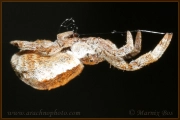
Genus Uloborus
Uloborus as well as the Araneidae (Wielwebspinnen) builds a regular orb web, with the difference that it is built almost horizontally and has no sticky droplets on the catching threads, but cribellate silk threadsinstead. In addition, the web contains two to four flat silk bands (stabilimenta), which is also present in the webs of Argiope – and Cyclosa -species. After mating in the spring, the female makes a remarkably long egg sac, which is a lot bigger than she is. The spiderlings hatch that same summer.
